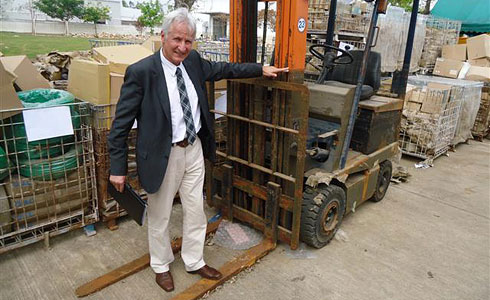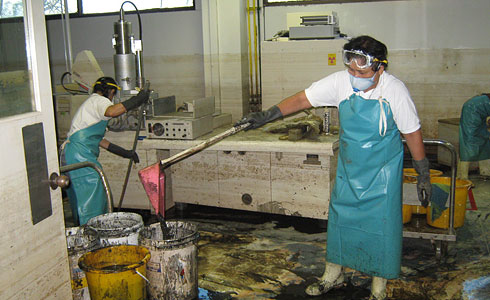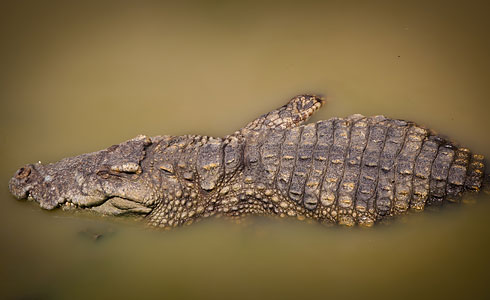"It was the first time in my life that I was warned about crocodiles. They had escaped from breeding farms and were roaming the flooded areas," the claims adjuster said. "I must admit it made me feel a little uneasy."
Crocodiles and corrosion - on site after the flood
Hufenreuter was lucky enough not to encounter any crocodiles in the industrial parks north of Bangkok, but he did find a lot of refuse and garbage. Except for a few puddles, the flood had receded, but the devastation was still visible everywhere: waterlogged walls and mold, rusted machinery, spoiled foods - as well as fire damage caused by short-circuits.
For six weeks the water had stood in and around the factories up to two meters high. Once it overflowed the protective walls, it took a long time before the water flowed away again.

Joachim Hufenreuter from Allianz Global Corporate & Specialty is an expert on damage to industrial facilities
To date, the death toll has reached over 800, and more than 14,800 businesses have been affected. Even though the full extent of the damage has yet to be established, the flood already counts as the country's most expensive catastrophe ever, more even than the tsunami in 2004.
The huge amount of physical damage is only part of the problem. At least as significant are the business interruptions the flooding has indirectly caused. Many important production sites for the automobile, electronics and semiconductor industry are located in Thailand. Consequently, interruptions along the supply chain here also cause business interruptions elsewhere. If electronic components from Thailand are not available, then computer manufacturers in the USA or automobile manufactures in Japan will also experience bottlenecks.

Employees clear away debris and clean up while drying fans hum throughout the factory buildings
One of Hufenreuter's visits is to a local semiconductor manufacturer. The company was able to move part of its expensive machinery to the upper floor, but it could only provide scanty protection with plastic sheeting to the equipment that remained on the ground floor. Everywhere on the premises employees clear away debris and clean up while drying fans hum throughout the factory buildings.
The loss adjustor carefully goes through the list of damages, examining uncertain claims together with the local loss adjuster and advising customers whether it would be better to replace or to repair a machine. When it is obvious without any detailed inspection that a loss exceeds the sum insured, Hufenreuter can even authorize an immediate payment.
"Estimating the loss is only part of the task. The most important thing is to get the business up and running again as soon as possible," said Hufenreuter. "That's in the interest of both parties."
No matter if it's fire, water or explosions: after three decades of working in claims, disasters are an everyday matter for him. His clients, on the other hand, are often unsure of what they should - or should not - do when they are affected. Supporting them and giving them clarity and security is what Hufenreuter considers his main task. He can do without the crocodiles.

Hufenreuter can do without the crocodiles
As with all content published on this site, these statements are subject to our Forward Looking Statement disclaimer.
Link to the disclaimer